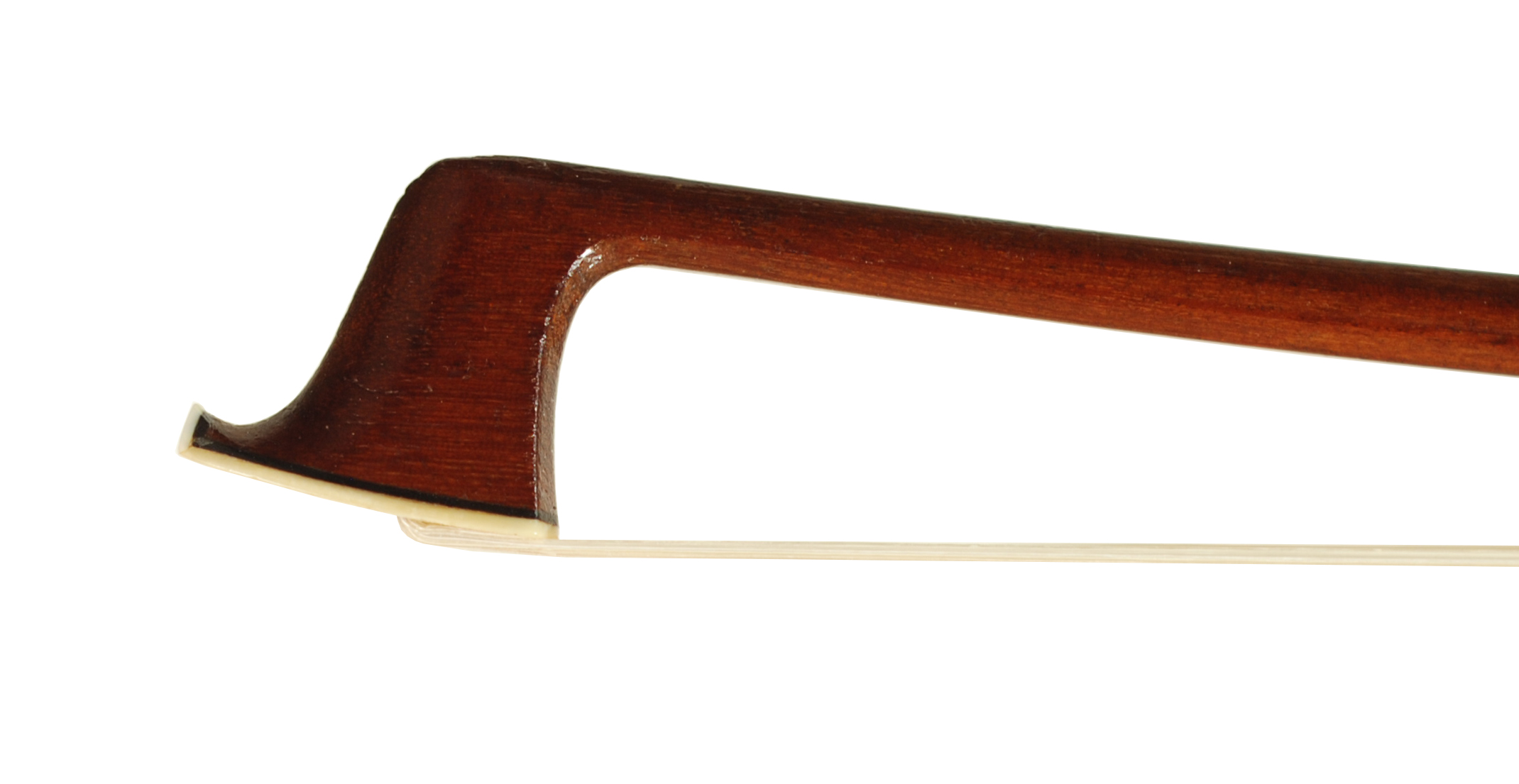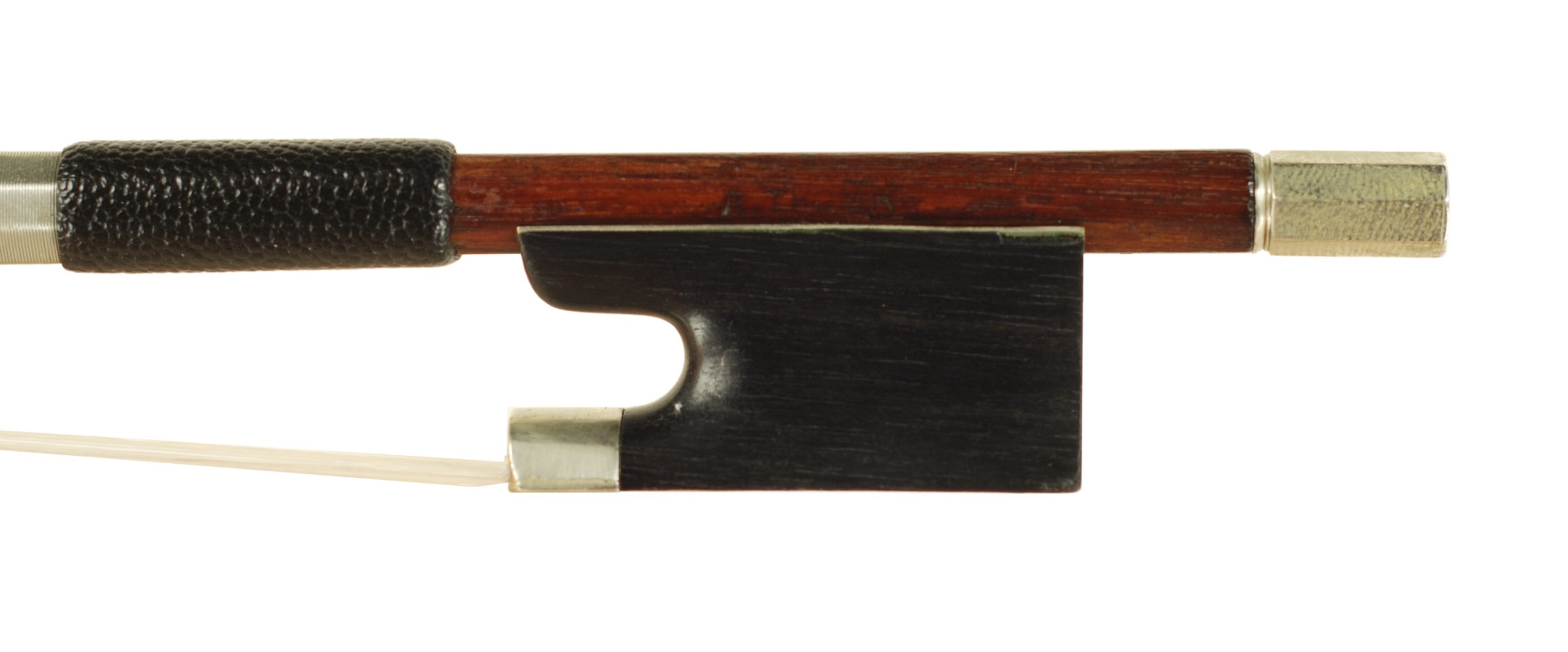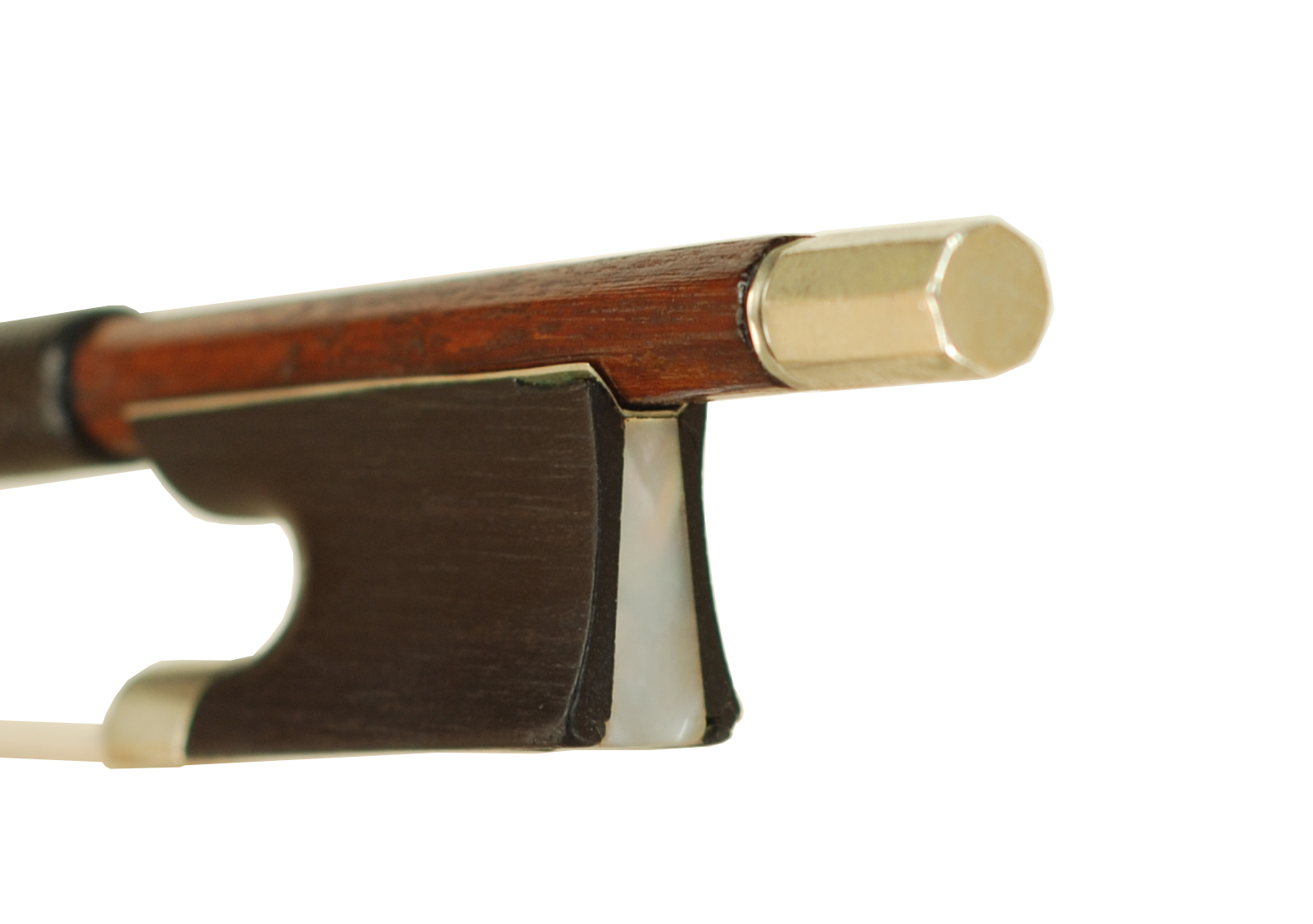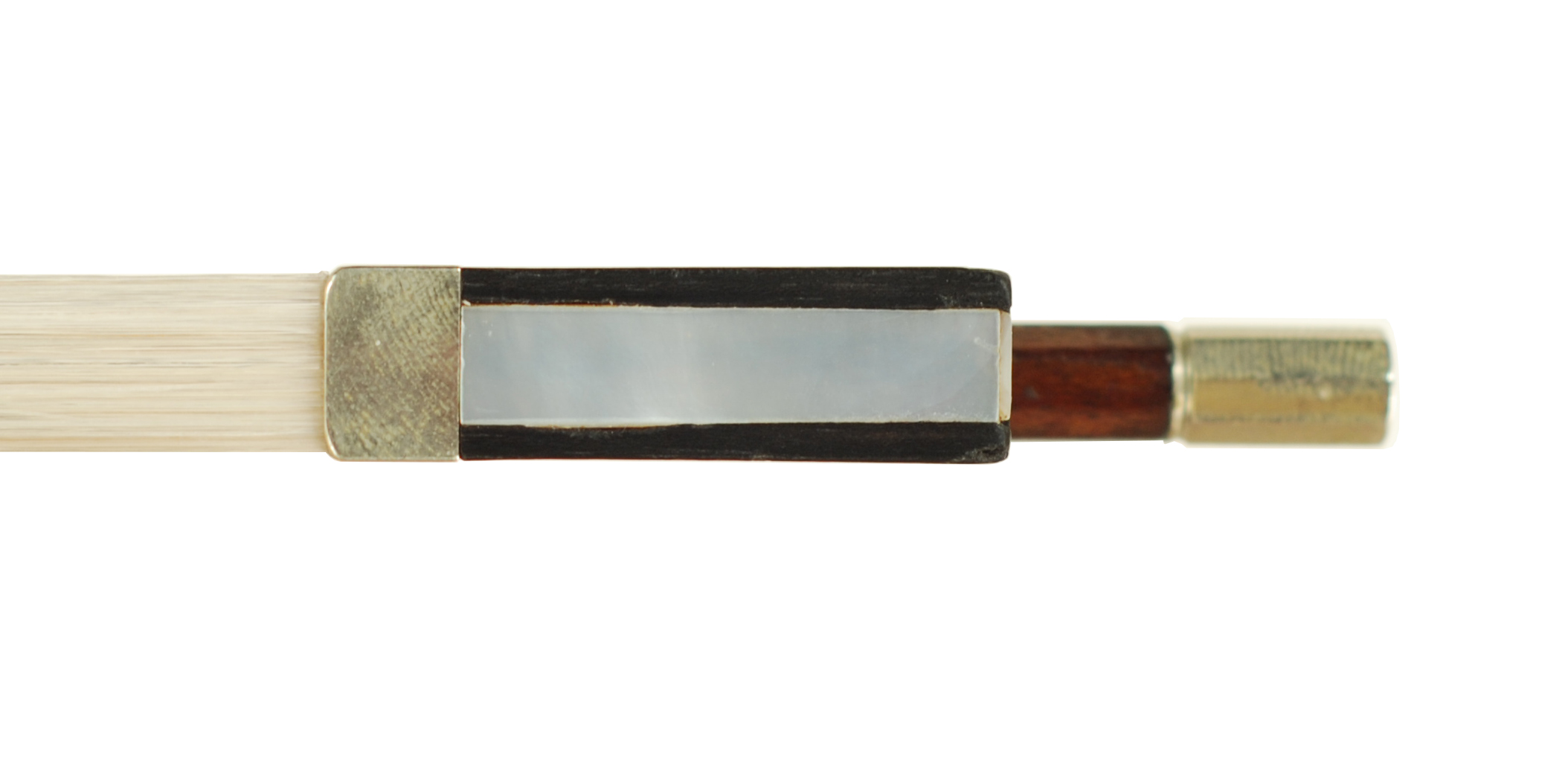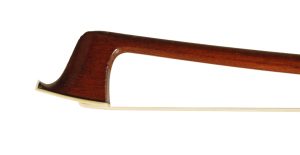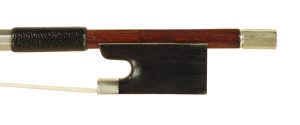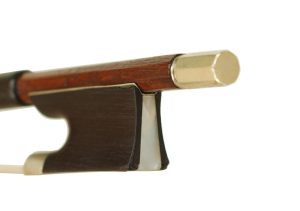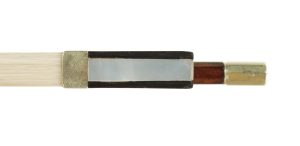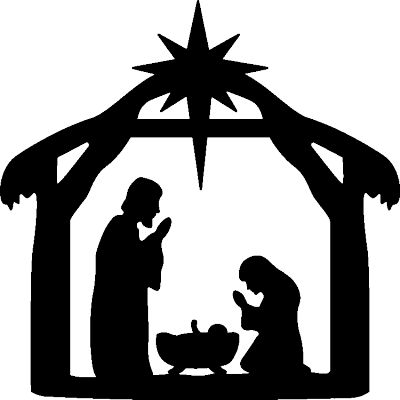Adolf Thoma Workshop Violin Bow – Hohendorf, Germany circa 1920-1930 – CURRENTLY OUT ON TRIAL
$1,200.00

Stamped:
In the 18th and 19th centuries Germany bow making was a patriarchal or a family craft, and to some extent, remains so today in the making world. There was an honor and respect for the master, which in many cases was a father, uncle, or grandfather, or from another highly respected workshop employee. This was someone who had the gift of teaching. Young people trained as apprentices, then became journeyman, before even being considered a master or ready to take a making exam. In some cases, the journeyman stage was shortened if their abilities were beyond fantastic and famous players sought after their stick. Most makers started as children in the family workshop and were already highly trained by the time they were teenagers. For myself, I got into bows and bow work as a 17 year old. June of 1980, I spent an entire summer immersed in bow work, cutting wedges in soft maple and poplar for rehairing, leather work for thumb grips and lapping from goat, lizard, kangaroo, steer, and ostrich hides, jewelry work for windings in nickel, sterling, silks, and tinsel, and cambering bows to learn the feel of wood strength. I did nothing else that entire summer. I trained under a German violin maker who lived close by. I developed a passion for the violin trade and had parents that encouraged me in what I did. Learning these skills and taking the time to train for almost nine years was better than fun, now I’m in my 46th year of learning bow work and 37th year with my own shop.
Adolf Thoma (1872-1961) followed this pathway too. He was born in Barendorf in 1872 and learned bow making from Hermann Thoma, his father. He set up his own shop in 1891 in Hohendorf, near Bad Brambach. Adolf was one of the first bow makers from that region around Bad Brambach to regularly stamp his bows. He had two sons, Albert and Arthur who also became bow makers, and both started out with their father Adolf.
This Thoma workshop bow is pernambuco, octagonal in section, and red/brown in color. The bow is mounted in nickel silver, and the head is slightly bell shaped. The octagonal stick has the Thoma look. Indicative of their bows is a thinner stick at the head with gradual girth developed until the winding, a piece of wood that is firm and yet flexible. The ebony frog has no mother-of-pearl eyes. The frog is blind eye with a full mother-of-pearl slide and heel. The frog is original with a solid nickel silver end button. The frog shows some signs of natural wear. The pernambuco wood where the bow is handled has darkened because of age and use. This is a good sign. The thumb and lapping leathers are in goat. I kept to the same overall gram weight as I replaced the original nickel winding and leathers. The bow is light to hold, easy to control, and plays well. If you’re looking for a lighter weight bow that handles off-the-string work well this could be your tool.
Weight fully haired 58.0 grams

